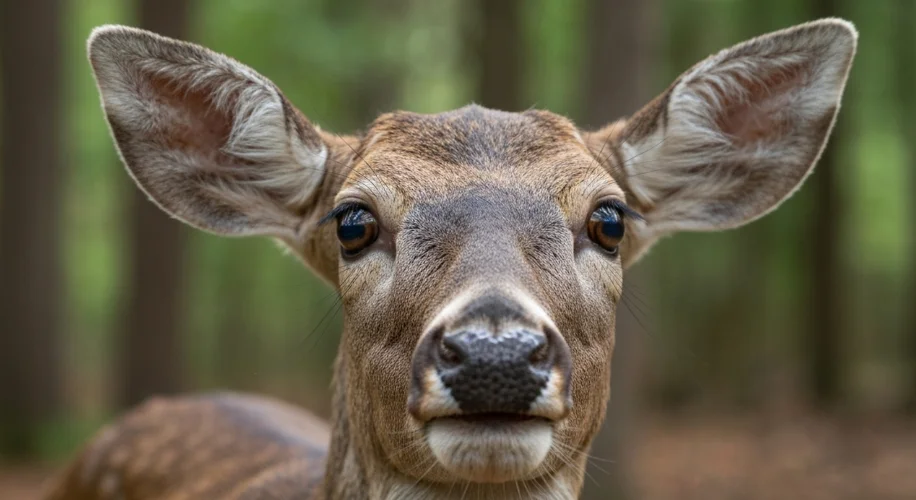Have you seen those unsettling photos and videos popping up online? Deer with strange, wart-like growths, rabbits that look like they’ve stepped out of a science fiction movie, and squirrels with peculiar skin conditions. It’s understandable why these images have gone viral and sparked concern – and maybe even a little fear.
These sightings, often described as ‘zombie animals’ or featuring ‘nightmare’ creatures, have been reported across the United States and parts of Canada. While the visual impact is dramatic, it’s important to understand the science behind what’s happening.
What’s Causing These Mutations?
The primary culprit behind many of these unsettling growths, particularly the prominent warts seen on deer, is a virus. Specifically, it’s often caused by the cottontail rabbit papillomavirus (CRPV). This virus is a type of papillomavirus, similar to the human papillomavirus (HPV) that can cause warts in people.
When this virus infects an animal, it causes rapid cell growth, leading to the formation of these benign tumors, or warts. These can appear anywhere on the animal’s body, including the face, ears, legs, and even internally. While alarming to look at, they don’t always immediately threaten the animal’s life, though they can sometimes grow large enough to interfere with feeding or vision.
Why Are We Seeing More of This?
There are a few factors that might contribute to the increased visibility of these conditions:
- Increased Reporting and Social Media: With the power of smartphones and social media, unusual sightings are shared more widely and rapidly than ever before. What might have gone unnoticed a decade ago is now instantly broadcast to millions.
- Environmental Factors: While CRPV is the direct cause, environmental conditions can play a role in the overall health and susceptibility of wildlife populations. Factors like habitat stress, exposure to other pathogens, or changes in diet can potentially influence how a virus affects an animal.
- Transmission: The virus is typically spread through direct contact between animals or through vectors like biting insects. Areas with higher animal densities or conditions that stress the immune system can lead to more widespread infections.
What About the ‘Zombie’ Animals?
Descriptions like ‘zombie squirrels’ or ‘Frankenstein rabbits’ often stem from animals that appear disoriented, lethargic, or have significant physical changes. While the warts are caused by a virus, other conditions can affect an animal’s behavior. For instance, the mange mite, a microscopic parasite, can cause severe hair loss, thickened skin, and discomfort, making animals appear unwell and acting strangely. In some cases, neurological issues or other diseases could also be at play, leading to unusual behavior.
What Can We Do?
It’s natural to feel concerned when we see wildlife suffering. However, it’s important to remember that these are wild animals, and our primary role is observation.
- Do Not Feed Wildlife: Feeding wild animals can alter their natural behaviors, encourage reliance on human food sources, and potentially spread diseases more easily.
- Maintain Distance: Avoid approaching or attempting to handle sick-looking animals. This is for your safety and the animal’s.
- Report Sightings: If you see animals with severe symptoms or notice a pattern in a specific area, consider reporting it to your local wildlife agency or department of natural resources. They are equipped to monitor wildlife health and can provide expert guidance.
Seeing these animals can be a stark reminder of the complex interplay between viruses, our environment, and the health of wildlife. While these growths are concerning, understanding the science behind them helps demystify these viral photos and reminds us of the fascinating, and sometimes challenging, world of nature around us.

